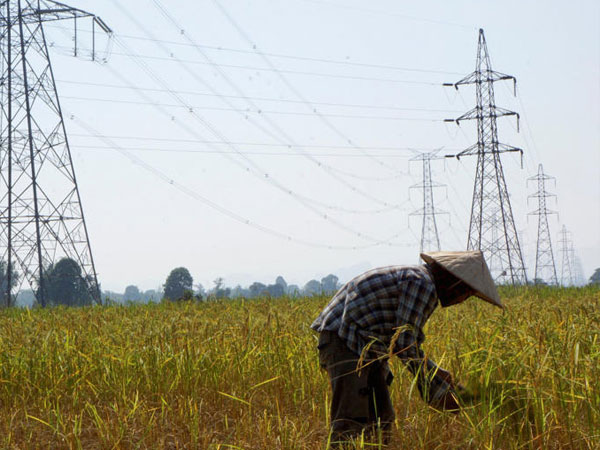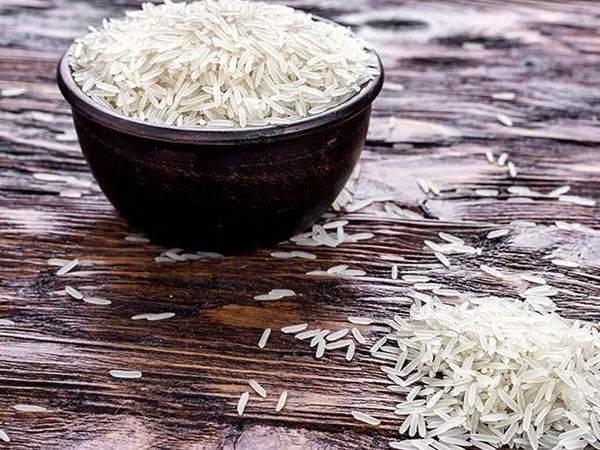 In some poorer areas, stunting is even more prevalent. Experts say a lack of dietary diversity is a big part of the problem
In some poorer areas, stunting is even more prevalent. Experts say a lack of dietary diversity is a big part of the problem
Laos is facing worsening child malnutrition, with experts warning that the country's economic challenges and underfunding for agriculture are contributing to the crisis, leaving thousands of children at risk of experiencing stunted growth and other serious health complications.
At the 10th National Nutrition Forum in Vientiane, speakers from global agencies and academia said there was a need for comprehensive measures to tackle the crisis, as failure to do so would hurt the Laotian economy.
"Adequate nutrition is essential for a child's growth, intelligence and future earnings," Alexander Kremer, the World Bank's country manager in Laos, said at the forum on Tuesday. "Unfortunately, Laos faces extremely high rates of childhood malnutrition."
Do you have questions about the biggest topics and trends from around the world? Get the answers with SCMP Knowledge, our new platform of curated content with explainers, FAQs, analyses and infographics brought to you by our award-winning team.
Deputy Prime Minister Kikeo Khaykhamphithoune said it was "important that we build on our past progress and recommit ourselves to ensuring every woman and child" in Laos had access to good nutrition "so they can thrive and fully contribute towards the nation's development".
Despite years of efforts to tackle the problem, Laos continues to struggle with alarming levels of childhood malnutrition.
Stunted growth due to a chronic lack of nutrition affected nearly one in every three children under the age of five in Laos as of 2023, according to data from the Lao Social Indicator Survey. About 10.7 per cent of Laotian children were classified as wasting, meaning they were dangerously thin for their height, while 24.3 per cent of them were underweight for their age.
Child malnutrition persists even though Laos has recorded a rice surplus annually since the late 1990s, according to World Bank data.
Experts say the Southeast Asian country has not been able to bolster its food security due to poor infrastructure hampering the transport of rice to many of its provinces.
Apart from poor accessibility in these areas, worsening floods due to climate change have also curtailed agricultural production, according to Dirk Essink, an assistant professor in global health at Vrije Universiteit Amsterdam.
Sayvisene Boulom, deputy head of the Department of Rural Economics and Food Technology at the National University of Laos, told This Week in Asia that despite efforts to promote agricultural production with nutrition goals in mind, Laotians living in rural areas did not have enough resources to produce food. "Food insecurity is a big problem," Boulom said.
Essink and Boulom said the official data released in 2023 was likely an underestimation of the seriousness of child malnutrition in Laos, as remote areas might have been overlooked in the assessment.
They cited a survey conducted by a team led by them and published in 2020 that showed 72.8 per cent of children living in the Nong district, one of the poorest areas in the country, were stunted - more than double the national average.
A key indicator of child malnutrition was that the overwhelming majority of Laotian children did not have a balanced diet, said Shanny Campbell, country director of the Asian Development Bank's resident mission to Laos.
The country faces significant food security challenges due to limited dietary diversity
Shanny Campbell, Asian Development Bank
"The country faces significant food security challenges due to limited dietary diversity, with only 2.5 per cent of the population meeting the minimum dietary diversity recommendations," she said.
Enhancing the nutrition of Laotians is a long-standing policy objective under Vientiane's National Plan of Action on Nutrition, which is reviewed every five years.
But Vientiane's commitment towards supporting the plan for the long term has been called into question.
From 2016 to 2019, only 34.5 per cent of the budget for the 2016-2020 plan was allocated, despite 90 per cent of funding coming from international organisations, according to a review conducted by the Laotian government and Unicef.
The World Bank had been urging Vientiane to increase spending on public health, Kremer told This Week in Asia. He noted that the government had reduced the ratio of public health spending to gross domestic product by half since 2013.
"This is partly because of the current economic situation, and partly because of the need to repay foreign debt. The current convergence programmes are just covering the poorest areas of Laos, but there are lots of opportunities to scale them up to reach a larger population," Kremer said.
Laos has worked with the World Bank on five different projects financed by the global institution to tackle malnutrition among very young children living in the poorest villages.
Boulom said that high inflation in Laos was fuelling its economic slowdown, which in turn was hampering its efforts to tackle malnutrition.
While inflation slowed last year, it remained at an elevated 21.3 per cent with households incurring high expenses, particularly for healthcare and food, according to Laotian media reports.
Laos is also facing a funding shortage to tackle its health problems, partly due to the policies of US President Donald Trump. On his first day in office, Trump ordered all US foreign aid to pause for 90 days, which caused disruptions to many programmes of the US Agency for International Development worldwide.
"With the new policy [stance] of the United States, we cannot secure sufficient international funding for the school lunch intervention as well as other nutrition and agricultural activities," Boulom said.
In a new initiative to tackle malnutrition, Laos announced earlier this month that it would undertake a major rice fortification project in partnership with the United Nations World Food Programme. The project is aimed at increasing Laotians' intake of vitamins and minerals by blending the nutrients with rice during the production process.
For Laos to achieve success for this project, it would need more help from its global partners, Boulom said.
"Laos will need to rely on the import of nutrients from overseas. When the government has money, and with donors' support, you can do it," he added.
Essink said the project would be key to tackling malnutrition in Laos.
"We have to put food fortification within a package of initiatives, and the most important thing is to ensure that people could produce food locally so that it could be sustainable."













© Copyright 2025 The SSResource Media.
All rights reserved.